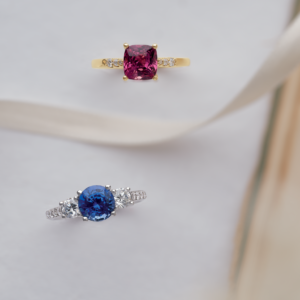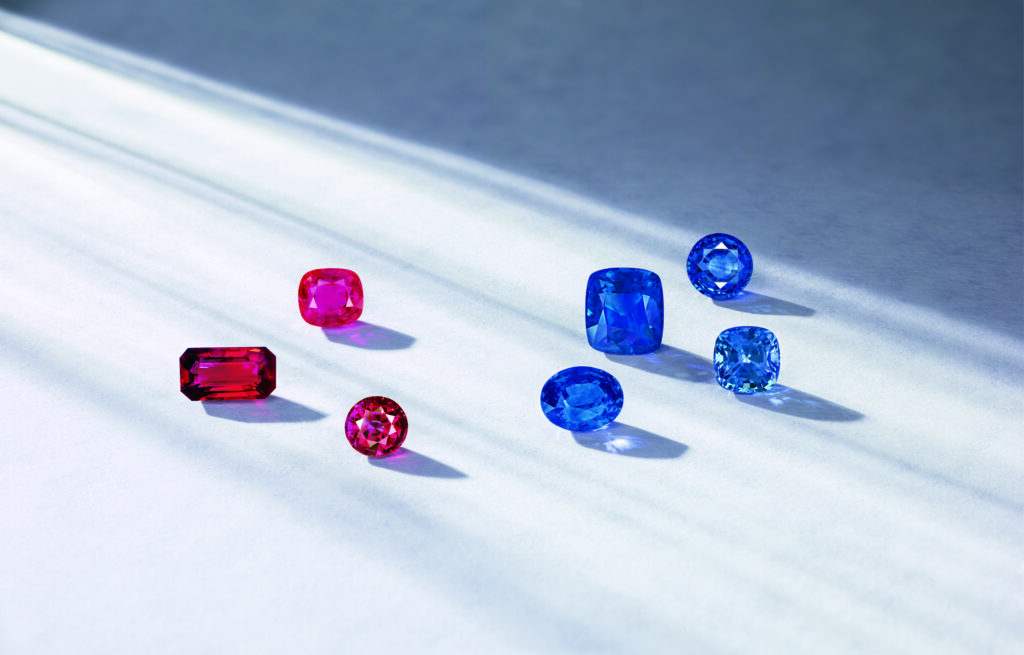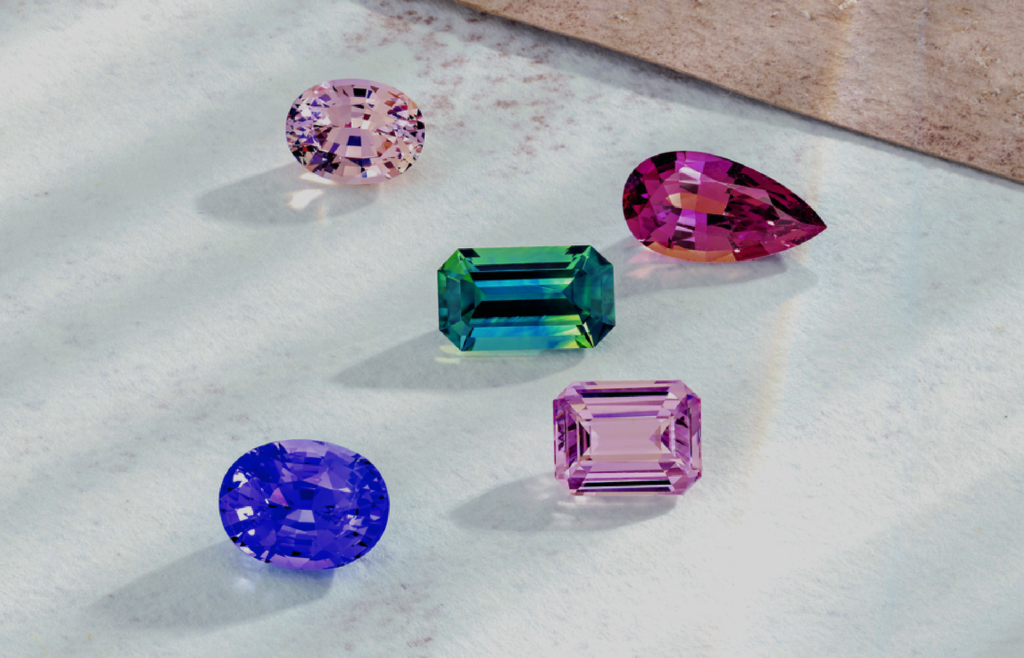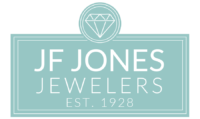
Gemstone Guide
Diamonds may be the most traditional stone used in engagement rings for centuries, but there is a world of options when it comes to center stones with vibrant and eye-catching hues. Gemstone center stones have become more and more popular over recent years. From Princess Diana’s Sapphire to Jessica Simpson’s Ruby, you can find gemstones of all shapes, sizes, and colors gracing the fingers of those who are happily in love.
Let this guide be your resource in finding the perfect gemstone to add to your engagement ring.
Understanding Gemstone Durability
When choosing a gemstone center stone for your engagement ring, there’s more to consider than just color and visual appeal. No matter the gemstone, you will want to make sure it stays safe, secure, and undamaged in the future. Let’s break down two very important traits that affect gemstone durability.
Hardness
When we say hardness, we mean a gemstone’s resistance to scratching on the surface. You’ve probably heard that diamonds are the hardest substance. This means they are highly resistant to scratching other than by another diamond. There are gemstones, such as Sapphires and Rubies, that also have high levels of hardness. However, there are gemstones, such as Amethyst, that have low levels of hardness and scratch easily. Wear bridal jewelry with softer gemstones mindfully if worn on a daily basis.
Durability
Toughness refers to a gemstone’s resistance to breaking and chipping. This is different than hardness. For example, Sapphires and Rubies actually have a higher toughness rating than diamonds because they are less likely to break and chip. While diamonds do not scratch very easily, hitting them at the right angle can cause damage. Gemstones, such as Tanzanite and Opal, with low toughness ratings should be worn with extra care. Using the right setting on an engagement ring can protect center stones that aren’t as tough.
Top 5 Colored Gems
Morganite
While many colored gemstones are chosen for their vibrant color, Morganite is a light and soft pink. Named after famous banker and gemstone collector J. P. Morgan, Morganite is often associated with financial prosperity. When cut, only the highest quality stones are crafted into jewelry-quality Morganite so you can feel confident of the quality of your center stone.
Aquamarine
As the name suggests, Aquamarine’s hues resemble calm ocean waters. While many prefer the pure sky-blue tone of Aquamarine, its true color of greenish blue is an indication of an untreated gemstone and is seen as more valuable. This gemstone brings the perfect symbolism for a center stone because it has been historically thought to bring happiness in marriage and protection.
Sapphire
When you think of a Sapphire center stone, what likely comes to mind is the gorgeous Sapphire engagement ring worn by Princess Diana and now Kate Middleton. However, did you know that Sapphire comes in every color of the rainbow, except red (which would make it a Ruby)? This versatile and durable gemstone is perfect for an engagement ring you’ll cherish.
Ruby
Ruby is one of the most well-known and recognized gemstones in history with a strikingly deep red color. A Ruby’s warm glow in the sunlight makes it a vibrant option for an engagement ring center stone. With high value and durability, Ruby is a stunning and worthy choice for everyday wear.
Emerald
If you are looking to live out your Jackie Kennedy fantasy, then an Emerald center stone is for you! The eye-catching green hues of Emerald are unparalleled. When choosing an Emerald to be your center stone, look for those desirable bluish green to pure green tones with a vivid color saturation.
Natural Diamond Alternatives
Lab Diamond
Lab grown diamonds are quickly becoming one of the most popular natural diamond alternatives for engagement rings. Optically, chemically and physically identical to natural diamonds -making them the most durable of the alternative options available. The difference is the origin (made in a lab, not mined from the earth) and the cost (roughly 60% less than mined diamonds.)
Moissanite
Moissanite is a newer diamond alternative for engagement rings. Originally discovered from the remains of meteorites, jewelry-quality Moissanite nowadays is primarily lab-grown and very cost-effective. While you will commonly find colorless Moissanite due to its resemblance of a diamond, you can also find it in a variety of colors. Moissanite is second only to diamonds when it comes to hardness and is actually twice as refractive as a diamond. This means you will see a truly gorgeous sparkle from this center stone.

Color Pairing with Metal
Once you have chosen your preferred gemstone center stone, you also need to consider which gold color will look the best with your chosen gemstone.
Neutral toned natural and lab diamonds as well as moissanite pair well with all gold colors.
While you can pair any gemstone with whatever metal color you choose, here are our recommendations.
Yellow Gold
- Aquamarine
- Emerald
- Morganite
- Ruby
- Sapphire
White Gold
- Aquamarine
- Emerald
- Ruby
- Sapphire
Rose Gold
- Aquamarine
- Morganite
- Pink Sapphire
Shop Gemstones Now
In Stock

Special Order

